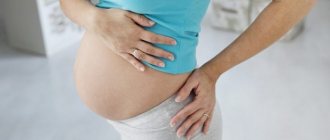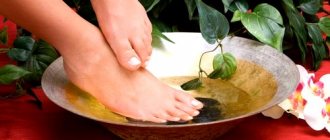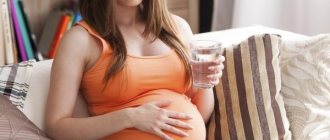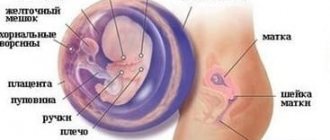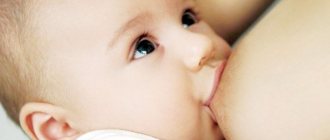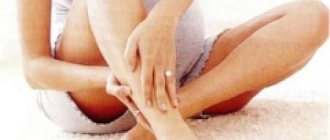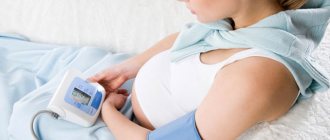Carrying a baby is a happy time for a woman. Happiness is overshadowed by unpleasant, painful sensations for nine months. Women often experience heel pain during pregnancy. This phenomenon should not be ignored. Consult a doctor who will prescribe treatment to help relieve and remove symptoms.
For some, heel pain appears in the evening, for other women it’s the opposite – in the morning, goes away during the day, and returns in the evening. It is painful for a woman to stand even for a short time. Pain may occur while jumping.
This is due to hormonal changes in the body. Heel pain can be affected by weight gain that accompanies the last trimester of pregnancy and swelling. Do not ignore the forward redistribution of the center of gravity.
The cause of heel pain is shoes, the transition from heels to flat soles. Choose comfortable shoes with low, wide heels. Due to the constant stress on the knees, cracks may form on the heels, and when stepping on the feet, pain is felt. Baths to soften and cleanse the skin, daily moisturizing, and treating the heels with special tools in the salon help.
Sore heels
Doctors do not recommend ignoring heel pain. Pain does not always go away after childbirth. The cause is an exacerbation of varicose veins. Problems with the heart and blood vessels can result in heel pain. Causes of heel pain in a pregnant woman include diabetes, heel fasciitis, and Achilles tendinitis.
Itchy feet during pregnancy: causes
The symptoms of itching are very similar to the symptoms of fungal foot infections. An infectious disease specialist or dermatologist can make an accurate diagnosis. Since women experience changes throughout the body in their position, it is difficult to independently determine the true cause of itching.
The main causes of itching in pregnant women are:
- hormonal changes;
- liver dysfunction, such as cholestasis;
- allergic reactions;
- increased sweating;
- skin diseases.
According to statistics, in 94.6% of cases, itchy legs in pregnant women appear due to excessive accumulation of fluid in the body and an increase in body volume. And if the examination results exclude liver disease and serious allergic reactions, then itching on the legs during pregnancy should not harm the child.
Achilles tendonitis
Putting stress on the knees during pregnancy leads to Achilles tendonitis. It hurts for a woman to step on her heel. Tendonitis is inflammation of the heel tendon tissue. The back of the legs is subject to stress while carrying a child, salts are excreted worse, accumulate, the elasticity of the tendon decreases, and the tissues become inflamed.
While walking or jumping, a woman experiences severe nagging pain, which subsides with further movement. The skin over the heel tendon becomes red and this part of the leg swells.
Damage to the Achilles tendon occurs due to flat feet in a pregnant woman and the use of uncomfortable shoes. A skin growth may form in the Achilles tendon area. It hurts for a woman to step on her heel. Start treating inflammation as early as possible, otherwise tendinitis will become chronic.
A sign of chronic tendonitis is nagging pain after sleep. It hurts to walk when the surface is tilted, or on stairs. Chronic tendinitis leads to the development of heel spurs. The disease is diagnosed by palpating the surface with your fingers - a pain point is detected. An ultrasound will show where the tissue is torn.
Medicine recommends that treatment for tendinitis begin with removing the load from the knees of the injured limb. The ankle joint is tightened with an elastic bandage, and a cold compress is applied. If the tendon is severely damaged, it may be necessary to apply a cast to relieve the load on the ankle part of the leg. After pain is relieved, continue treatment with a course of massage and gymnastics.
Treating itching at home
Any treatment depends on a clearly established diagnosis. If itching appears as a result of swelling of the body, start with local therapy. The following recommendations will help relieve itchy feet during pregnancy:
- Take a foot bath with chestnut tincture, sea salt, and chamomile infusion.
- Apply a special moisturizing and pain-relieving cream to your feet.
- Wear cotton socks. Synthetic products provoke an allergic reaction.
- Drink the right amount of fluid. Drink at least 1.5 liters of water per day.
- Try to exclude from your diet citrus fruits and other foods that can cause an allergic reaction - seafood, honey, peanuts.
These recommendations help temporarily relieve the symptoms of itching. The itching finally goes away only after childbirth and recovery of the body.
What is the reason
The most common cause of heel pain is excess body weight. The abdomen increases in size, the center of gravity shifts, and the musculoskeletal system experiences greater stress than usual. Unpleasant sensations occur after a long stay in an upright position, walking or wearing new, uncomfortable shoes. If these factors are eliminated, heaviness and pain in the legs and heels quickly disappear.
During the entire pregnancy, a woman should gain 12–15 kg. When an excessive increase in body weight occurs, the lower limbs, spine, and cardiovascular system suffer, and the risk of developing late toxicosis, gestational diabetes, varicose veins, and edema increases.
Possible causes of heel pain:
- plantar fasciitis,
- heel spurs,
- mechanical injuries, Achilles tendonitis,
- diabetic foot,
- sexually transmitted infections: gonorrhea, chlamydia,
- reactive, psoriatic, rheumatoid arthritis,
- ankylosing spondylitis,
- Reiter's syndrome,
- heel bursitis,
- paresthesia.
The pain can be localized, spread to the entire limb, disturb only when making movements, or appear at rest, at night.
Some patients complain that their heels hurt after childbirth, although no such symptoms arose for nine months. The cause may be damage to the spinal nerve in the lumbar region, which occurs during complicated labor. Complications are diagnosed in women with a narrow pelvis, or if the child is very large.
Methods of prevention and prevention of itching symptoms
Anyone can experience itchy feet. But you can try to regulate the factors that influence its appearance, such as physical and psycho-emotional state. Therefore, to expectant mothers:
- Avoid standing or sitting for long periods of time. In such cases, blood circulation is disrupted, which provokes numbness of the upper integument of the skin.
- We need to walk more in the fresh air. This is useful for the mother as a prevention of anemia, because the blood is saturated with oxygen. This improves blood circulation, activates brain activity, and improves the psycho-emotional state.
- Take a contrast shower. If your body is not used to such treatments, try doing it only on the parts of the body where itching occurs.
- Visit a massage parlour. Sometimes itching in the feet disappears if you massage them. Massage can also be done at home.
Itching on the legs is an unpleasant symptom, but it can be prevented or alleviated by following the recommendations described above.
Numb feet
If the foot goes numb, itches, there is a burning or tingling sensation in the heel - this is due to a violation of the nerve receptors of the legs and swelling of the tissues. This is hypoesthesia resulting from diabetes mellitus and vitamin B deficiency.
The foot becomes numb due to inflammation of the joints and heel spurs. Causes: osteochondrosis, arthritis, vascular diseases. Damage to the central nervous system also causes numbness in the heels. This is facilitated by the load on the heart when carrying a baby.
If your feet rarely go numb, don't worry. After childbirth, the numbness will disappear. The problem can be treated at home. Physical exercise, water aerobics, warm showers, foot massage, and reducing the load on the knees help. Also, an iron-containing diet, taking vitamins, controlling blood sugar if numbness occurs due to diabetes.
If your leg goes numb regularly, see a doctor. The doctor will prescribe an ultrasound and Doppler examination to detect blood clots, varicose veins, and other vascular diseases. A complete blood count will be required to detect anemia. If this is not enough, the doctor will prescribe consultations with other specialists.
When the heel becomes numb and itchy, treatment consists of procedures that strengthen blood vessels. Phlebotonics and a special ointment are prescribed. Compression stockings and elastic bandages worn during labor will help with numbness. In rare cases, plaster is used. Continue treatment after delivery.
Symptoms
The typical and only symptom of the disease is itching during pregnancy. He appears exclusively in the last trimester. First, the feet and palms begin to itch. The condition worsens in the evening and at night. As the concentration of bile acids increases, the whole body (legs, abdomen) itches, the itching becomes very intense and painful. Scratching appears on the skin.
It is important to note that the skin color remains normal and there is no jaundice. Blood tests that are usually prescribed to expectant mothers as screening (total bilirubin, AST, ALT, alkaline phosphatase, cholesterol) may be within normal limits. Sometimes AST and ALT increase slightly.
At the very beginning of the disease, it is impossible to identify signs of fetal suffering. CTG and ultrasound data of the child remain normal.
Sometimes it happens that the most severe itching suddenly goes away completely. Most often, this indicates that a catastrophe has occurred and the child has already died. In this case, it is necessary to urgently go to the hospital. But it is best not to bring it to an extreme state.
Determination of the concentration of free bile acids in the blood plasma is of decisive importance in diagnosis. Unfortunately, this analysis is not part of screening and is done only in some commercial laboratories.
Normally, the concentration of bile acids should not exceed 5.7 µmol/l. In expectant mothers, their level is allowed to increase to 7 µmol/l. Itching in pregnant women appears when the concentration of bile acids is more than 11 µmol/l . A value of 40 µmol/l is clinically expressed by painful, unbearable itching of the skin. And it is precisely this value (40 µmol/l and above) that is extremely dangerous for the child and is an indication for urgent delivery. That is why, even if the doctor has not prescribed a blood test for free bile acids, it is worth doing it in the last trimester in any case, and if the skin begins to itch, the first test that needs to be done is to determine the bile acids in the blood.
Cholestasis in pregnancy treatment
The only drug that can help a woman is Ursosan (ursodeoxycholic acid). The main active ingredient of the drug is a non-toxic water-soluble acid that can bind and neutralize toxic bile acids. The drug significantly alleviates the condition of the expectant mother and improves the prognosis for the child. The medicine is prescribed only if the concentration of bile acids is less than 40 µmol/l, at a dose of 10-15 mg/kg.
If a woman has elevated levels of AST and ALT, it is also worth taking Heptral. You should absolutely not take hepatoprotectors from the group of essential phospholipids, for example, Essentiale, they can worsen the condition. It is also recommended to exclude all additional medications, such as vitamins, in order to relieve the liver as much as possible.
Why do your feet itch during pregnancy?
As a result of skin stretching. Weight gain is a natural condition throughout pregnancy. As a pregnant woman approaches childbirth, her pelvic bones expand and the volume of subcutaneous fat in the hips, buttocks, arms and legs increases. The skin stretches, and this leads to itchy legs and arms during pregnancy.
It is not difficult to determine that the unpleasant sensations are associated precisely with this cause: usually, when the skin is overstretched, stretch marks are formed on its surface - skin defects similar to scars.
When hormonal balance changes. Significant changes occur in the body of the expectant mother, the amount of progesterone and estrogen - “pregnancy hormones” - increases. The amount of sebum produced, which is usually responsible for moisturizing the skin, decreases. This affects the condition of the skin: it becomes dry, too sensitive and thin.
If you do not take care of your skin and moisturize it, the feeling of tightness will soon be accompanied by itching.
As a manifestation of an allergy. The changes that occur during pregnancy affect, among other things, the immune system of the expectant mother - otherwise, she simply would not be able to bear the baby. Outwardly, this can manifest itself in the form of an unexpected reaction to seemingly familiar things: food, cosmetics, household chemicals, even water and the sun.
Allergies often manifest themselves precisely on the extremities: arms and legs begin to itch, red spots appear, the skin becomes sensitive and peels.
For liver problems. Cholestasis is a common diagnosis among pregnant women, associated, in fact, with their condition. Genetic factors and excessive estrogen production, characteristic of the period of pregnancy, negatively affect the functioning of the gallbladder. And the growing belly displaces the internal organs and prevents them from functioning fully. The result is stagnation of bile, which the liver cannot cope with.
This rather dangerous disease develops in the last trimester of pregnancy and occurs with virtually no symptoms. Itching is just one of the few.
If an expectant mother in late pregnancy has itchy feet, toes, hands, and the itching intensifies at night, this is a reason to inform your doctor about your condition and get tested for the amount of bile.
In case of deviations in the functioning of the internal systems of the body. Itching, in fact, is a symptom of quite a large number of internal disorders and diseases. If your hands and feet itch, this may indicate the development of diabetes mellitus or problems with the thyroid gland (hypothyroidism). Timely diagnosis is important so that the development of the disease does not harm mother and baby.
Diabetic foot lesions
One of the causes of heel pain is diabetes. Due to increased sugar levels, blood flow deteriorates, tissues are poorly supplied with oxygen, and pain appears in the leg. The skin of the foot itches and flakes. Diabetes mellitus is accompanied by cracks. In the worst case, a hole, an ulcer, or a black spot appears on the heel. It is important to start treatment on time, otherwise diabetic foot syndrome develops, leading to amputation.
Signs of leg damage in diabetes: Swelling of the lower extremities, pain in the lower legs, calves, knees and heels. Skin color is pale, red, blue. The temperature of the foot is either cold or hot. Fungus forms on the nails and between the toes - diabetes leads to damage to the feet.
A pregnant woman with diabetes should monitor her glucose level and follow the doctor's recommendations regarding nutrition. Treatment and – wash feet with warm water without soap, dry thoroughly. Pay attention to the area between your fingers.
To moisturize your feet, use a special ointment or rich cream. If you have diabetes, it is not recommended to hover your feet or use mechanical means to remove rough skin. Use special socks for pedicures that prevent the appearance of calluses and cracked feet.
The choice of shoes plays an important role in diabetes. Special and convenient for leg pathologies, relieving the load on the calves and knees. Wearing backless shoes if you have foot pain is not advisable. If you have diabetes, choose socks without rigid elastic.
Itchy legs below the knees during pregnancy: reasons
A specific problem that is typical for expectant mothers, especially in the later stages of pregnancy: legs often itch at 37-39 weeks. At this time, the woman has gained her maximum weight during the entire pregnancy, and the baby has already grown and is ready to be born. The last weeks are especially difficult physically, and the legs, which bear a lot of stress, often suffer.
Due to varicose veins, swelling of the lower extremities occurs in the area of the legs and ankles. Due to the accumulation of fluid, the skin is overstretched and microtraumas are formed. This condition inevitably manifests itself in the form of itching, which haunts the woman until childbirth.
Diabetic foot lesions
Diabetes mellitus is a disease of the endocrine system caused by metabolic disorders, accompanied by an increase in blood glucose levels. Pathology can manifest itself before pregnancy or during pregnancy. The disease is dangerous for the development of severe complications in the fetus and the expectant mother, so women should undergo a thorough examination at the stage of family planning.
Diabetes during pregnancy is often diagnosed in mothers over 35 years of age who have a hereditary predisposition, excess body weight, and bad habits. The cause may also be autoimmune inflammation of the pancreas or viral diseases.
Uncompensated gestational diabetes can cause disruption of the functioning of the circulatory and nervous systems; in a complicated course, symptoms of diabetic damage and heel pain occur.
The severe consequences of the disease for the newborn include: macrosomia, perinatal mortality, intrauterine developmental defects, congenital diabetes mellitus. In the mother, the disease may subside after the birth of the baby.
Diabetic foot syndrome is characterized by frequent trauma to soft tissues: even minor wounds, abrasions, and calluses lead to deep suppuration of the epidermis. Ulcers do not heal for a long time; in severe cases, they cause the development of gangrene and partial or complete amputation of the leg.
Pathological changes in joints, ligaments, tendons, nerve fibers and blood vessels lead to irreversible deformation of the lower extremities, swelling, heel pain, numbness, and decreased sensitivity.
Itchy skin on legs during pregnancy: what to do?
First of all, it is important to understand that if itching is caused by diseases of the internal organs or skin, poor diet, or stress, then it cannot be treated by itself. We need to solve the problem that causes itchy legs and arms during pregnancy.
But unpleasant sensations on the skin caused by the condition of a pregnant woman can be eliminated by following simple recommendations:
- Diuretic herbal preparations help with swelling of the legs (no self-medication - only after consulting a doctor!).
- For dry and sensitive skin, it is better to choose intensive moisturizing and nourishing care products.
- Compliance with the regime, proper and balanced nutrition, sufficient rest - all this will help eliminate possible conditions such as fatigue, stress, allergies.
- Drinking enough drinking water will reduce the risk of edema and replenish the lack of fluid in the body.
- Refusal of decorative cosmetics with non-natural composition and careful use of household chemicals, as well as protecting the skin from the sun or frost outside will reduce the risk of allergies and skin diseases.
My heel hurts, what should I do? How to get rid of pain and when to see a doctor
Heel pain is a rather unpleasant symptom; this disease can bother patients at any age. The reasons for this phenomenon are quite varied. And only by learning why the heel hurts can we understand how we can help ourselves and alleviate the condition. And in some cases, only a doctor can relieve pain.
How to understand why your heels hurt?
Pain inside the heel can be bothersome for many reasons. Most often, unpleasant sensations are a consequence of heavy physical exertion, when a person is forced to spend the whole day on his feet, is overweight, due to improperly selected shoes or the presence of microtraumas. Symptoms such as numbness of the toes are also possible.
In addition, if your right heel or left heel hurts, this may be a sign of various diseases that need to be treated under the guidance of a doctor. If heel pain does not go away for a long time, a mandatory consultation with a doctor is necessary.
What diseases can cause heel pain?
What to do if your leg hurts as a result of some disease? Of course, consult a doctor. But first you need to determine which disease caused the discomfort in the heel area. You can try to cope with this task yourself.
Heel spur. A spur on the heel is a kind of growth that prevents a person from feeling comfortable when walking. The heel thorn pricks the inside of the foot muscle and causes pain. With timely treatment, a significant improvement in the condition is observed, but if the disease is neglected, it will be very difficult to treat.
Plantar fasciitis. This disease is characterized by inflammation of the fascia, the connective tissue that runs from the toes to the heel.
Predisposing factors to the development of bo Source
